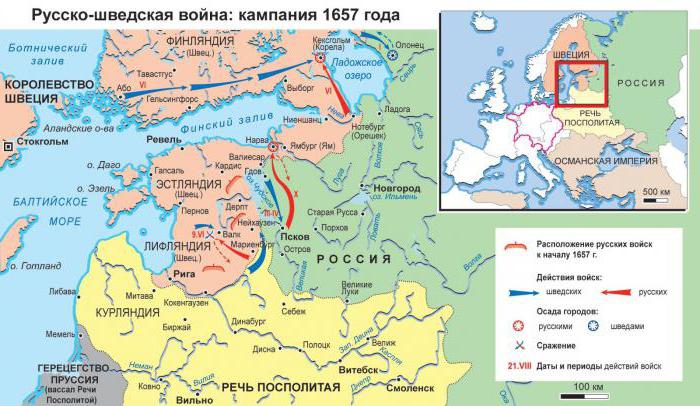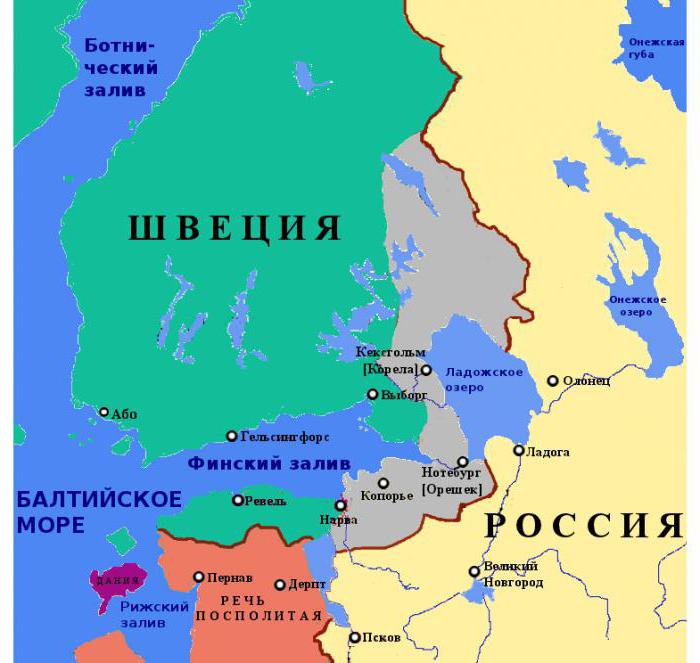The Cardis Peace of 1661 is the treaty that ended the war between Russia and Sweden. His conclusion influenced not only the international position of Russia, but also its position in the war with Poland.
The causes and premises of the war
Under the terms of the peace treaty of 1617, signed in the city of Stolbovo, territories from Lake Ladoga to Ivangorod passed to Sweden. As a result, Russia was completely cut off from access to the Baltic Sea. Subsequent events in Europe led to an even greater strengthening of Sweden. According to the Peace of Westphalia, which ended the Thirty Years' War, it gained vast territories on the shores of the Baltic and North Seas.
In 1655, Swedish troops invaded Krakow and Warsaw. These events marked the beginning of the Northern War. At that time, the great Lithuanian hetman Janusz Radziwill recognized the protectorate of the Swedish king over his state. This agreement nullified all the military achievements of Russia in the Grand Duchy of Lithuania.
In 1656, the Russian Tsar Alexei Mikhailovich entered into an alliance with the Commonwealth and declared war on Sweden.
The course of hostilities 1656-1658.
- In late July - August 1656, Russian troops entered Dinaburg and Kockenhausen. Also during this period, an unsuccessful siege of Riga took place. This was largely due to the situation on Ukrainian lands. At this time, the new hetman Ivan Vygovsky concluded an agreement with the Commonwealth on joint military operations against Russia.
- In the summer of 1656, military units under the command of Peter Potemkin occupied Nyenschanz and blocked Noteburg. Support in operations in Ingermanland by Russian troops was provided by Karelian peasants.
- In the fall of 1656, units of Aleksei Mikhailovich were taken by Yuriev (southeastern Livonia), Neuhausen, Atsel and Custer.
- In 1657, Swedish troops went on the offensive and invaded the Pskov region.
- In June, near Valk, Sheremetyev’s detachment suffered a crushing defeat.
- On September 16, 1657, the battle of Gdov took place. Swedish troops were defeated by the corps of Prince Khovansky. As a result, the military initiative passed to the Russian army.
- At the beginning of 1658, units under the command of Prince Khovansky captured Yamburg and approached Narva.
- After signing a peace treaty with Denmark, Sweden intensified hostilities. The Khovansky detachment near Narva was defeated. In addition, the Swedish units managed to regain control of Nienschanz and Yamburg.

On December 20, 1658, a Russian-Swedish truce was concluded in Valiesesari for a period of 3 years. According to the terms of the agreement, Russia retained control of the occupied territories in the Baltic states.
Cardisian world of 1661: reasons for signing and conditions
In 1661, Russia's position in the Northern War worsened significantly. There was a need to conclude a new contract.
After lengthy negotiations, Russia entered into the Cardis peace with Sweden. Unlike the Valiesar Agreement, the terms of this agreement were less beneficial for the first party.
The main provisions of the Cardis world:
- Russia transferred to Sweden the cities conquered during the military campaigns of 1656-1658. Under the control of Adolf Johann I passed the important strategic point Kockenhausen, located on the right bank of the Daugava, Derpt, Neuhausen, Marienburg, Syrensk. Having abandoned the Estonian and Livonian territories, Russia transferred control of the Baltic states to Sweden.
- Sweden refused to support the Commonwealth in the war against Russia (1654-1667).
- Under the terms of the Cardis peace, Russian merchants were allowed to keep trading yards in the largest Swedish cities (Stockholm, Narva, Riga).
- The Swedes gained the right to create trading yards in Moscow, Novgorod and other large centers of Russia.
- Under the terms of the world, both sides pledged to return the prisoners.

Thus, the Cardisian world actually established the boundaries defined by the Stolbovsky Treaty of 1617. This agreement was signed on unfavorable terms for Russia, but later it had a significant impact on the course of the war with Poland.
The consequences of the Cardis peace for Russia
The Cardisian peace ended the war of 1656-1658. However, at the same time, Russia was drawn into a conflict with the Commonwealth. The signing of the Cardis peace greatly facilitated its position in this war.
The fighting ceased in 1667 in connection with the signing of the Andrusov Armistice. According to its conditions, the lands that left the Polish-Lithuanian Commonwealth during the Time of Troubles passed to Russia, as well as Smolensk and the Left Bank of Little Russia.